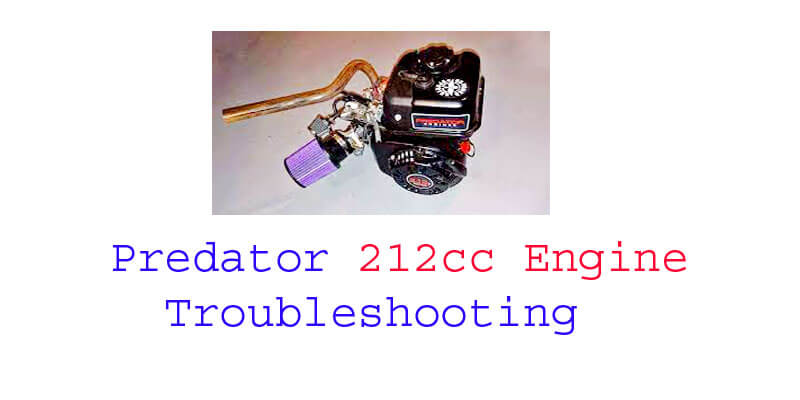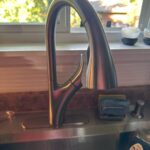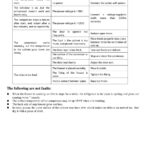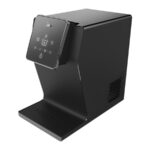Troubleshooting your predator 212cc engine includes checking spark plug, fuel supply, and air filter. The predator 212cc engine may experience common issues such as difficulty starting, poor performance, or stalling.
The predator 212cc engine is a popular choice for small engine enthusiasts due to its reliability and power. However, like any engine, it can encounter issues that may impact its performance. Troubleshooting these problems is essential to maintain the engine’s optimal functionality.
In this article, we will explore common troubleshooting techniques for the predator 212cc engine, including checking the spark plug, fuel supply, and air filter. By following these steps, you can effectively identify and resolve potential problems to ensure the engine continues to run smoothly.

Understanding The Predator 212Cc Engine
The predator 212cc engine is a powerful and reliable engine that is widely used in various applications, such as go-karts, mini bikes, and generators. Whether you are an aspiring mechanic or a hobbyist, it is important to have a good understanding of this engine to troubleshoot any potential issues that may arise.
In this section, we will explore the key features and specifications of the predator 212cc engine, providing you with the knowledge you need to effectively maintain and troubleshoot this engine.
Key Features And Specifications Of The Engine:
The predator 212cc engine boasts several notable features and specifications that contribute to its popularity among engine enthusiasts. Let’s take a closer look at these key points:
- Powerful performance: The predator 212cc engine is equipped with a 212cc displacement, delivering an impressive amount of power for its size. This ensures smooth and efficient operation, making it suitable for a wide range of tasks.
- Ohv design: The engine incorporates an overhead valve (ohv) design, which enhances the efficiency and durability of the engine. This design promotes improved fuel consumption and reduced emissions, while also ensuring reliable performance over time.
- Pull start mechanism: Starting the engine is a breeze, thanks to the convenient pull start mechanism. This eliminates the hassle of complicated starting procedures, allowing you to get to work quickly and effortlessly.
- Air-cooled system: The predator 212cc engine is cooled by air, eliminating the need for complex liquid cooling systems. This not only simplifies maintenance but also ensures efficient cooling without the risk of coolant leaks or related issues.
- Low oil shutdown: To protect the engine from potential damage, the predator 212cc engine is equipped with a low oil shutdown feature. This automatically shuts off the engine when the oil levels are insufficient, preventing costly repairs and extending the engine’s lifespan.
- Durable build quality: Designed for longevity, the engine features a sturdy construction that can withstand rigorous use. Whether you’re navigating rough terrains or subjecting the engine to demanding tasks, the predator 212cc engine is built to last.
- Easy maintenance: Maintenance is made hassle-free with the predator 212cc engine. With accessible parts and straightforward procedures, routine maintenance tasks such as oil changes and spark plug replacements can be easily accomplished.
- Compatibility: The predator 212cc engine is highly versatile and compatible with various applications. Its compact size and adaptable design make it suitable for use in go-karts, mini bikes, pressure washers, and more.
- Affordability: In addition to its exceptional performance, the predator 212cc engine offers great value for money. Its affordable price point makes it an attractive option for individuals seeking an engine that balances performance and cost-effectiveness.
Understanding the key features and specifications of the predator 212cc engine is crucial for troubleshooting and maintaining this powerful engine. Whether you’re embarking on a new project or facing an issue with your current setup, this knowledge equips you with the necessary expertise to diagnose and address any potential problems effectively.
Common Issues Faced By Predator 212Cc Engine Owners
Overview Of Common Problems Encountered With The Engine
The predator 212cc engine, while reliable and powerful, may experience some common issues that owners come across. It’s important to be aware of these problems and troubleshoot them promptly to ensure optimal performance. Let’s delve into the most common problems faced by predator 212cc engine owners:
Examination Of Specific Engine Components And Their Potential Issues
To troubleshoot any engine problems effectively, it’s crucial to examine specific components and identify potential issues. The following components require careful inspection:
- Air filter: A dirty or clogged air filter can restrict airflow and affect engine performance. Regular cleaning or replacement is necessary.
- Fuel line: A cracked or damaged fuel line can lead to fuel leakage and fuel delivery issues. Check for any signs of wear and replace if necessary.
- Carburetor: Problems with the carburetor can cause engine stalling, erratic idling, or hesitation. Ensure it is clean and properly adjusted.
- Governor: A faulty governor may result in engine speed problems. Verify that it is functioning correctly and not causing any irregular rpm fluctuations.
- Oil level: Low or dirty oil can lead to engine knocking, overheating, or premature wear. Ensure the oil level is adequate and change it regularly.
Spark Plug Problems And Troubleshooting
Issues related to the spark plug can cause ignition problems, leading to poor engine performance. Here are some common spark plug problems and troubleshooting tips:
- Fouled spark plug: A fouled spark plug can result in misfires and difficulty starting the engine. Remove and clean the spark plug or replace it if necessary.
- Incorrect gap: An incorrect spark plug gap can lead to misfiring or engine hesitation. Check the manufacturer’s specifications and adjust the gap if required.
- Worn electrode: A worn electrode can hinder proper spark generation. Inspect the electrode’s condition and replace the spark plug if necessary.
Fuel System Problems And Troubleshooting
The fuel system is crucial for the engine’s proper operation, and any issues can lead to poor performance. Here are common fuel system problems and troubleshooting suggestions:
- Clogged fuel filter: A clogged fuel filter can restrict fuel flow, resulting in engine sputtering or stalling. Replace the fuel filter on a regular basis.
- Contaminated fuel: Bad or contaminated fuel affects engine performance. Drain the fuel tank and refill it with clean, fresh fuel.
- Fuel line blockage: A blocked fuel line can impede fuel delivery and cause stalling or lack of power. Inspect the fuel line for any obstructions and clear them if necessary.
Ignition System Problems And Troubleshooting
The ignition system, responsible for sparking the fuel-air mixture, can face some issues. Here are common ignition system problems and how to troubleshoot them:
- Faulty ignition coil: A faulty ignition coil can lead to weak or no spark, resulting in engine misfires. Test the ignition coil with a multimeter and replace if necessary.
- Ignition timing issues: Incorrect ignition timing can cause hard starting, poor performance, or knocking sounds. Verify the timing settings and adjust if needed.
- Loose or damaged ignition wires: Loose or damaged wires can disrupt the spark flow, leading to engine misfires. Check the wires for any damage or looseness and repair or replace them accordingly.
Cooling System Problems And Troubleshooting
A properly functioning cooling system is vital for preventing engine overheating. Let’s explore common cooling system problems and how to troubleshoot them:
- Insufficient coolant level: Low coolant can cause overheating and engine damage. Check the coolant level regularly and top up as needed.
- Clogged radiator: A clogged radiator can obstruct airflow and lead to overheating. Clean the radiator fins to ensure proper cooling.
- Cooling fan issues: Malfunctioning cooling fans can result in inadequate heat dissipation. Inspect the fans for proper operation and replace if necessary.
Exhaust System Problems And Troubleshooting
Problems with the exhaust system can affect engine performance and emissions. Consider the following common exhaust system issues and steps to troubleshoot them:
- Clogged muffler or exhaust pipe: A clogged muffler or exhaust pipe can impede exhaust flow and lead to reduced power. Clean or replace the clogged component as needed.
- Exhaust leaks: Leaks in the exhaust system can cause noise, decreased power, or fuel inefficiency. Inspect the system for any leaks and repair them promptly.
- Carbon buildup: Excessive carbon buildup in the exhaust system can restrict airflow and reduce engine performance. Regular cleaning or decarbonizing is recommended.
By understanding these common issues faced by predator 212cc engine owners and their respective troubleshooting techniques, you can ensure smooth operation and maximized performance. Regular maintenance and prompt troubleshooting are key to getting the most out of your engine.
Step-By-Step Troubleshooting Guide For Predator 212Cc Engine Issues
When it comes to troubleshooting your predator 212cc engine, it’s essential to follow a systematic approach to identify and resolve any problems. This step-by-step guide will help you diagnose and troubleshoot common engine issues, ensuring optimal performance for your engine.
Initial Checks And Inspection
Before diving into specific troubleshooting steps, it’s important to start with some initial checks and inspections. Here are a few key points to consider:
- Check the fuel level: Ensure that there is enough fuel in the tank and that it is not contaminated.
- Inspect the air filter: A dirty or clogged air filter can affect engine performance. Remove and clean or replace it if necessary.
- Examine the spark plug: Check for any signs of damage or fouling and ensure that it is properly gapped.
- Verify the throttle position: Ensure that the throttle is functioning correctly and not stuck in an open or closed position.
- Inspect the engine for any visible leaks or loose connections.
Understanding Error Codes And Warning Signs
Error codes and warning signs can provide valuable insights into engine issues. Here is what you need to know:
- Familiarize yourself with the engine’s manual: Understand the error codes and warning signs specific to your predator 212cc engine.
- Pay attention to dashboard lights: Regularly check for any illuminated dashboard lights that indicate engine problems.
- Note unusual sounds or odors: Unusual noises or strange smells can be indications of underlying issues.
Analyzing Engine Sound And Performance
A thorough analysis of the engine sound and performance can help pinpoint potential problems. Consider the following:
- Listen for abnormal engine noises: Knocking, rattling, or grinding sounds can indicate internal engine issues.
- Pay attention to engine performance: Note any changes in acceleration, idling, or overall power output.
- Observe exhaust smoke: Excessive smoke emission can indicate problems with fuel mixture or oil consumption.
Checking For Leaks And Loose Connections
Leaks and loose connections can disrupt the engine’s performance. Take the following steps:
- Inspect all hoses and connections: Look for any signs of leaking coolant, oil, or fuel.
- Tighten loose connections: Ensure that all connections are properly secured.
- Check gaskets and seals: Leaking gaskets or seals may need replacement.
Troubleshooting Specific Issues
Now let’s delve into troubleshooting specific issues you may encounter with your predator 212cc engine. Here are a few common problems and their possible solutions:
Difficulty Starting The Engine
- Check the spark plug: Clean or replace the spark plug if it is dirty or damaged.
- Verify the fuel flow: Ensure that fuel is reaching the carburetor properly.
- Inspect the ignition system: Check for proper spark and ensure all connections are secure.
Engine Running Rough Or Stalling
- Clean or replace the carburetor: A dirty or clogged carburetor can cause rough running or stalling.
- Check the fuel filter: A clogged fuel filter restricts fuel flow and affects engine performance.
- Inspect the ignition system: Ensure that the spark plug, ignition coil, and wiring are in good condition.
Overheating Issues
- Check the coolant level: Ensure that the coolant reservoir is filled to the appropriate level.
- Inspect the radiator and cooling system: Clean any debris and ensure proper airflow.
- Verify the functioning of the cooling fan: Ensure that the fan is operating correctly.
Loss Of Power
- Check the air filter: A clogged air filter restricts airflow and diminishes engine power.
- Inspect the exhaust system: Look for any obstructions that may be limiting exhaust flow.
- Verify the condition of the fuel system: Check for any clogged filters or fuel line restrictions.
Excessive Vibration
- Inspect the engine mounts: Loose or worn-out engine mounts can cause excessive vibrations.
- Check for balance issues: Ensure that the flywheel, crankshaft, and other rotating components are properly balanced.
- Inspect the pulleys and belts: Worn-out or misaligned belts can cause vibrations.
Low Oil Pressure
- Check the oil level: Ensure that the engine oil level is sufficient.
- Inspect the oil pump and filter: A malfunctioning oil pump or clogged filter can result in low oil pressure.
- Verify the condition of the oil pressure sensor: Replace if necessary.
Diagnostic Tools And Techniques
Using diagnostic tools can enhance your troubleshooting process. Consider the following techniques:
- Proper use of a multimeter: Measure voltage, resistance, and continuity to identify electrical issues.
- Compression testing: Determine if there are any compression problems within the engine.
- Vacuum testing: Assess the condition of engine seals and gaskets by measuring vacuum levels.
- Use of engine diagnostic software: Utilize specialized software to analyze engine performance and diagnostics.
By following this step-by-step troubleshooting guide, you can effectively identify and resolve issues with your predator 212cc engine. Remember to consult the engine’s manual and seek professional help if needed.
Preventive Maintenance Tips For Predator 212Cc Engine
The predator 212cc engine is a powerful and reliable workhorse that can provide excellent performance. However, like any other engine, regular maintenance is crucial to keep it running smoothly and extend its lifespan. By performing preventive maintenance tasks, you can avoid potential issues and ensure optimal performance.
Here are some essential tips to keep your predator 212cc engine in top shape.
Importance Of Regular Maintenance
Regular maintenance is key to keeping your predator 212cc engine operating at its best. Here’s why it’s important:
- Optimal performance: Regular maintenance ensures that all engine components are clean, in good condition, and functioning properly. This leads to better overall performance and power output.
- Longevity: Taking care of your engine through regular maintenance can significantly extend its lifespan. By identifying and addressing minor issues early on, you can prevent major problems from developing.
- Efficiency: A well-maintained engine operates more efficiently, which can save fuel and reduce emissions. This, in turn, helps you save money and minimize your environmental impact.
Recommended Maintenance Schedule
To keep your predator 212cc engine in peak condition, it’s essential to follow a recommended maintenance schedule. Here are the key maintenance tasks and their frequency:
- Inspecting and cleaning engine components: Regularly check the engine for any signs of damage, corrosion, or leaks. Clean the engine and remove any dirt or debris that may have accumulated.
- Air filter maintenance: Clean or replace the air filter every 25 hours of operation or as needed. A clogged air filter can restrict airflow and reduce engine performance.
- Spark plug replacement: Replace the spark plug every 100 hours of operation or when it shows signs of wear, such as a worn electrode or excessive carbon deposits.
- Fuel system cleaning: Clean the fuel system every 300 hours of operation or as recommended by the manufacturer. This involves inspecting and cleaning the fuel filter, carburetor, and fuel lines.
- Oil and filter change: Change the engine oil and filter every 50 hours of operation or as recommended by the manufacturer. Fresh oil helps lubricate the engine and prevent excessive wear.
- Cooling system maintenance: Check the cooling system for any leaks, ensure proper coolant levels, and clean the radiator regularly to prevent overheating.
- Checking and adjusting valve clearance: Regularly inspect and adjust the valve clearance to ensure proper engine performance and prevent valve damage.
Inspecting And Cleaning Engine Components
To maintain your predator 212cc engine, it is crucial to inspect and clean the various engine components. Here are some key points to consider:
- Regularly check the engine for signs of cracks, leaks, or damage.
- Clean the engine surface to remove any dirt or debris.
- Inspect the fuel tank, fuel lines, and connectors for leaks or blockages.
- Check the throttle linkage for proper operation and adjust if necessary.
- Ensure that the engine mount bolts are tight and secure.
Air Filter Maintenance
The air filter plays a crucial role in preventing debris and contaminants from entering the engine. Here’s how to maintain it:
- Inspect the air filter regularly for dirt, dust, or damage.
- Clean the air filter if it appears dirty or clogged.
- If cleaning is not sufficient, replace the air filter with a new one.
- Ensure the air filter is properly seated and securely fastened.
Spark Plug Replacement
The spark plug is responsible for igniting the air-fuel mixture in the engine. Regular replacement is vital for optimal performance:
- Check the spark plug regularly for signs of wear or carbon deposits.
- Replace the spark plug if the electrode is worn or damaged.
- Use a spark plug recommended by the manufacturer for the best results.
- Follow the correct torque specifications when installing the new spark plug.
Fuel System Cleaning
Cleaning the fuel system ensures efficient fuel delivery and prevents clogs or blockages. Here’s what you need to do:
- Regularly inspect the fuel filter for dirt or debris and replace it if necessary.
- Clean the carburetor and fuel lines to remove any deposits or blockages.
- Use a carburetor cleaner or fuel system cleaner recommended by the manufacturer.
- Follow the instructions provided by the manufacturer for proper cleaning procedures.
Oil And Filter Change
Regular oil and filter changes are essential for maintaining engine lubrication and preventing excessive wear:
- Drain the old oil while the engine is warm, following the manufacturer’s instructions.
- Replace the oil filter with a new one to ensure proper filtration.
- Refill the engine with the recommended oil type and quantity.
- Dispose of the old oil and filter properly, according to local regulations.
Cooling System Maintenance
Proper cooling system maintenance is crucial for preventing overheating and maintaining engine performance:
- Regularly inspect the radiator for any signs of leaks or damage.
- Clean the radiator fins using compressed air or a soft brush to remove dirt or debris.
- Check the coolant level and top up if necessary, using the recommended coolant type.
- Inspect the cooling fan and ensure it is functioning correctly.
Checking And Adjusting Valve Clearance
Regularly checking and adjusting the valve clearance helps ensure proper engine performance and valve longevity:
- Refer to the manufacturer’s specifications for the recommended valve clearance.
- Use a feeler gauge to check the clearance and adjust as necessary.
- Follow the correct procedure for adjusting the valve clearance.
- Check for any abnormal noise or valve-related issues during operation.
By following these preventive maintenance tips for your predator 212cc engine, you can enjoy optimal performance, improved longevity, and avoid costly repairs. Remember to adhere to the recommended maintenance schedule and perform regular inspections and cleaning to ensure your engine stays in top shape.
Taking care of your engine today will pay off in the long run, providing you with reliable and efficient performance for years to come.
Advanced Troubleshooting Techniques For Persistent Engine Issues
If you’re experiencing persistent issues with your predator 212cc engine, it can be frustrating and time-consuming to figure out the root cause. However, with the right troubleshooting techniques, you can identify and resolve these problems effectively. Here are some approaches you can take:
Consulting The Predator 212Cc Engine Manual
When faced with persistent engine issues, the first step is to consult the engine manual provided by predator. This comprehensive guide contains valuable information on troubleshooting specific problems, maintenance tips, and recommended solutions. Here are a few key points to keep in mind:
- Start by carefully reading through the troubleshooting section of the manual.
- Look for relevant information related to your specific engine issue.
- Pay close attention to any warning signs, symptoms, or error codes mentioned in the manual.
- Follow the step-by-step instructions provided to diagnose the problem accurately.
- Make note of any recommended solutions or parts that may need replacement or adjustment.
Seeking Assistance From Professionals Or Engine Experts
If consulting the engine manual doesn’t yield the desired results, it’s advisable to seek assistance from professionals or engine experts who have expertise in working with the predator 212cc engine. Here are some important considerations when seeking help:
- Research local mechanics or engine specialists who are familiar with the predator 212cc engine.
- Contact reputable service centers or dealerships that offer support for this engine model.
- Clearly explain the persistent issues you’re facing and provide any relevant diagnostic information.
- Discuss the steps you’ve already taken as per the engine manual to avoid duplicating efforts.
- Follow the guidance provided by the professionals and request a detailed explanation of their findings and recommendations.
Understanding Warranty Policies And Procedures
If your predator 212cc engine is still under warranty, it’s crucial to have a good understanding of the warranty policies and procedures. This knowledge can help you address persistent engine issues without incurring unnecessary costs. Here’s what you should know:
- Familiarize yourself with the warranty terms and conditions specified in the engine manual or documentation.
- Determine the duration and coverage of the warranty and whether the persistent engine issues fall under its scope.
- Contact the manufacturer or authorized service centers to understand the warranty claim process.
- Follow the necessary steps for warranty claims, such as providing proof of purchase, maintaining proper maintenance records, and submitting required documentation.
- Be patient throughout the warranty process, as it may involve inspections, repairs, or part replacements.
By applying these advanced troubleshooting techniques, you can effectively address persistent engine issues with your predator 212cc engine. Whether you consult the engine manual, seek assistance from professionals, or explore warranty options, taking the right approach will help you get your engine running smoothly again.
Frequently Asked Questions On Predator 212Cc Engine Troubleshooting
What Are The Common Problems With A Predator 212Cc Engine?
Some common problems with a predator 212cc engine include difficulty starting, loss of power, overheating, and oil leaks.
How Can I Fix A Hard-Starting Predator 212Cc Engine?
To fix a hard-starting predator 212cc engine, check the spark plug, fuel supply, and air filter for issues. Ensure proper choke and throttle settings as well.
What Could Be Causing My Predator 212Cc Engine To Lose Power?
A predator 212cc engine may lose power due to a clogged air filter, carburetor issues, incorrect fuel mixture, or worn-out engine components.
Why Is My Predator 212Cc Engine Overheating?
A predator 212cc engine can overheat due to low oil levels, a malfunctioning cooling system, a restricted airflow, or a faulty ignition system.
How To Diagnose And Repair An Oil Leak In A Predator 212Cc Engine?
To diagnose and repair an oil leak in a predator 212cc engine, inspect the gaskets, seals, and oil filter. Tightening or replacing the faulty parts should resolve the issue.
Conclusion
Troubleshooting a predator 212cc engine can save you time, money, and frustration. Remember to start with the basics and check the fuel, air filter, and spark plug. If the issue still persists, consider more in-depth troubleshooting by inspecting the carburetor and governor.
Regular maintenance and cleaning can greatly improve the engine’s performance and longevity. Don’t forget to consult the manual or seek professional assistance for complex issues. Stay proactive by keeping your engine clean, properly lubricated, and regularly inspected. By taking these troubleshooting steps, you can keep your predator 212cc engine running smoothly and enjoy its powerful performance for years to come.




